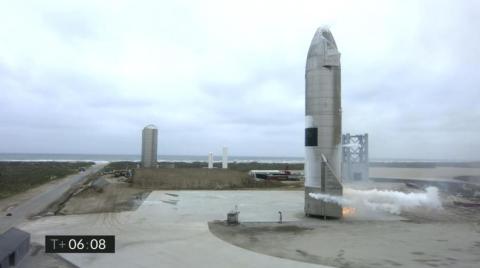
Russia uncovered the worlds first floating nuclear power station in order to meet its growing electricity needs in its drive to develop oil resources in remote Arctic regions.
Akademik Lomonosov arrived to Murmansk on Thursday where it is being loaded with nuclear fuel before heading to eastern Siberia. It was built in Saint Petersburg.
On Saturday, head of state nuclear power firm Rosatom Alexey Likhachev unveiled the brown-and-mustard-painted facility, according to Agence France-Presse (AFP).
Likhachev hailed the new power station as "a new world first," which he said "underlines the undoubted leading role of Rosatom and the Russian nuclear energy sector on the global agenda."
"I hope today will be a symbolic day for the Arctic," said to the press, adding that Rosatom is setting a trend, a demand for medium-capacity nuclear facilities, mobile facilities, for many decades ahead.
The 144-by-30-meter barge holds two reactors with two 35 megawatt nuclear reactors that are similar to those used to power icebreaker ships.
The Akademik Lomonosov will be towed in the summer of 2019 to the port of Pevek in the autonomous Chukotka region in Russia’s extreme northeast. It can produce enough electricity to power a town of 200,000 residents, far more than the 5,000 living in Pevek.
But Akademik Lomonosov isn’t in Pevek to just provide electricity, as Russia is forced to push further north into the Arctic in the search for oil and gas, it needs electricity in far locations.
Sergei Kondratyev of the Moscow-based Institute for Energy and Finance explained the idea is to have low-capacity, mobile power plants that can be used in the Russian Arctic where large amounts of electricity aren’t needed.
"The construction of a conventional power station would be complicated and costly," said Kondratyev adding that the alternatives are coal, gas and diesel "but diesel is very costly" while the gas needs to be delivered as liquefied natural gas.
Vitaly Trutnev, who is in charge of the construction and operation of floating nuclear power stations at Rosatom, said such units would "supply electricity and heat to the most remote regions, supporting also growth and sustainable development."
He indicated that the use of such floating reactors can save 50,000 tonnes of carbon dioxide emissions per year.
The Akademik Lomonosov is set to replace an ageing nuclear reactor and a coal-fired power plant, both in Chukotka.












